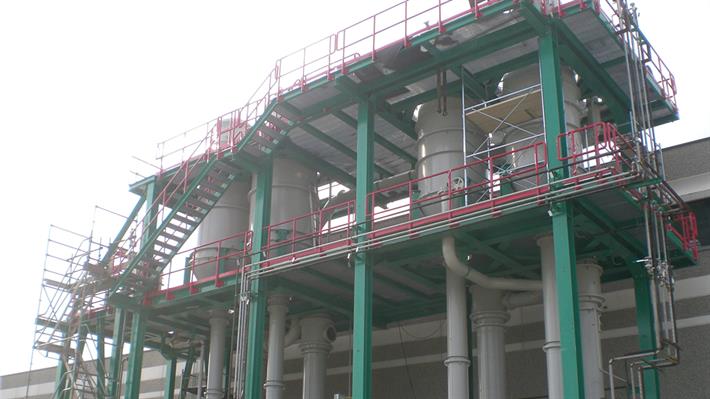SOLUTION CRYSTALLIZATION PLANTS
Solution crystallization is the formation of solid crystals from a supersaturated solution, also referred to as “mass crystallization” since it is commonly used to process bulk products.
This is a common solid-liquid separation process of a very selective nature. It enables the production of highly pure crystalline products in the desired granulometry while further giving the opportunity of recycling purified solvents, the most common of them being water.
Solution crystallization is well-suited for most applications and especially for large capacities. The use of different crystallizer types and energy efficient configurations among them allow to reach a desired particle size.
There are three basic types of crystallizers for Solution Crystallization – Forced Circulation (FC), Draft Tube Baffle (DTB) and Fluidized Bed (Oslo)- and they can be used alone or combined for:
- Evaporative crystallization
- Vacuum cooling crystallization
- Surface cooling crystallization
- Reaction crystallization
The selection of the appropriate equipment for the process and the design of the crystallization operation is influenced by many product and process specific parameters.
Particular features:
- Process concepts ensuring the desired product purity at maximum product yield
- Different crystallizer types and arrangements to achieve desired particle size and shape
- Heat recovery and heat integration to minimize operational expenses and environmental footprint
- Continuous operation
- Energy-efficient plant concepts
Around the globe, Solution Crystallization plants process daily millions of tons of bulk products like sugar, salt and fertilizers. Depending on the type of crystallizer, the achievable particle size ranges from microns to millimeters.
GEA Solution Crystallization Plants can be found serving to diverse industrial processes that include but are not limited to:
- Agrochemicals, including potash and multi-nutrient fertilizers
- Table salt and inorganic salts
- Minerals and metals, including lithium, magnesium, nickel and zinc salts as well as alloying elements like copper, molybdenum, vanadium and tungsten
- Inorganic acids
- Food and food related chemicals
- Organic and bio-based chemicals
- Landfill leachates concentration plants
- Industrial wastewater treatment up to zero liquid discharge (ZLD) systems
Let's stay in touch!
Contact us



